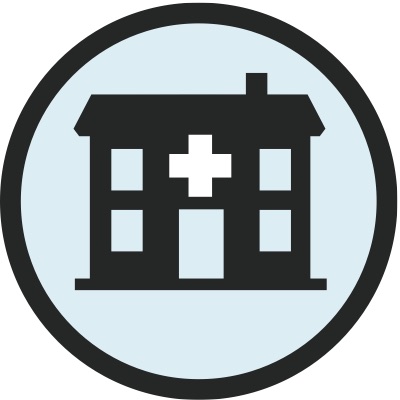Hospitals are a bit like cities. Cities have systems that keep them running, such as sanitation, police, and power. Hospitals have an HCIS.
What happens when this system stops running?
For a hospital, suddenly, the technology that helped it run like a well-oiled machine is gone. Uh oh. It will impact the entire hospital, but arguably the following four roles will feel the impact the most.
Doctor
You take a peek at the computer to see the latest patient notes before you stop in to see your next patient: the latest meds, tests and status. You laugh to yourself about the days before EMRs. But then the system goes down and you stop laughing. You look at your watch. How long will it take for the backups to get pulled? Your patient rounds are going to start backing up. You have surgery at 3 PM…
How will you make it to surgery if everything else gets backed up?
And if one surgery is backed up there is a whole domino effect. Not only can delays put patient safety at risk, surgery is crucial to the hospital’s health. Not good. You make a mental note to call the CIO to ask why in 2017 we’re still using paper and CD backups.
The Nurse
The system’s down. Your mind starts racing along with your heart rate. Who’s going to get the backups?
Why does it always seem like the back-ups are on the other side of the hospital?
That means high-tailing it to the other side of the hospital and tracking down the backups, switching to using patient records that are hand-written. How old are the records? Are they recent? What’s happened since the last back-up? These are big questions that will have to wait because patients and the clinical team are waiting.
Technology goes from friend to foe.
Pharmacist
The pharmacy is, in some ways, the engine of the hospital. Always running, never walking. We meet the needs of the patients 24/7. If we fall behind, it becomes increasingly difficult to catch up. Imagine an assembly line: one side delivers materials, the other side is supposed to do something with those materials. During a system downtime, we have to go from automated systems and counters that ensure accuracy to manual systems.
The pharmacy production line goes from 90 miles an hour to 10 miles an hour.
We can operate but just barely. And, obviously, this assembly line isn’t delivering cupcakes or parts for your car, it’s delivering life-saving medicine.
Admissions
We are the front gate of the hospital. When the system is down the doors are still open but it’s tough to get through that door. At Admissions, we are either the start or continuation of a patient’s story. A story that’s “written” down electronically. When the system is down and we switch to actual paper everything slows down.
Admissions is where we assign the methods to record what meds are taken, what surgeries or tests are scheduled. And those are matched to billing. No bills for our services and we lose our ability to serve. We are the patient hub.
It’s the equivalent of a big box store closing all the registers except one the week before Christmas.
This is not an exaggeration.
Long wait times cause people to either get frustrated or move on. That could mean revenue walking out the door. More importantly, a patient who needs care will be waiting to get that care.
There really is no such thing as a normal day in a hospital. That’s certainly true if you’re one of the people above. To learn more about how you can avoid the situations above, sign up to get our white paper “Healthcare Business Continuance: Implementing Procedures to Address Critical System Downtimes.”


